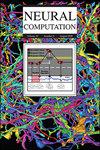基于距离的Logistic矩阵分解。
IF 2.1
4区 计算机科学
Q3 COMPUTER SCIENCE, ARTIFICIAL INTELLIGENCE
引用次数: 0
摘要
矩阵分解是矩阵补全和协同过滤的核心范式。在从药物靶标发现到音乐推荐的各种机器学习问题中,低秩分解在重构和泛化高维数据方面非常成功。几乎所有提出的矩阵分解技术都使用潜在因子向量之间的点积来重建原始矩阵。我们提出了一种广泛使用的逻辑矩阵分解的重新表述,其中我们使用距离,而不是点积,来衡量潜在因素之间的相似性。我们的研究表明,这种相似性度量可以绘制非线性决策边界并尊重点之间的三角形不等式,具有更强的表达能力和建模能力。在欧几里得和双曲空间中实现的基于距离的模型在三种不同结构和统计量的生物测试问题上优于先前的逻辑矩阵分解公式。特别是,我们证明了基于距离的分解(1)更好地泛化到测试数据,(2)在较低的因子空间维度下获得最佳性能,(3)在潜在因子空间中更好地聚类数据。本文章由计算机程序翻译,如有差异,请以英文原文为准。
Distance-Based Logistic Matrix Factorization
Matrix factorization is a central paradigm in matrix completion and collaborative filtering. Low-rank factorizations have been extremely successful in reconstructing and generalizing high-dimensional data in a wide variety of machine learning problems from drug-target discovery to music recommendations. Virtually all proposed matrix factorization techniques use the dot product between latent factor vectors to reconstruct the original matrix. We propose a reformulation of the widely used logistic matrix factorization in which we use the distance, rather than the dot product, to measure similarity between latent factors. We show that this measure of similarity, which can draw nonlinear decision boundaries and respect triangle inequalities between points, has more expressive power and modeling capacity. The distance-based model implemented in Euclidean and hyperbolic space outperforms previous formulations of logistic matrix factorization on three different biological test problems with disparate structure and statistics. In particular, we show that a distance-based factorization (1) generalizes better to test data, (2) achieves optimal performance at lower factor space dimension, and (3) clusters data better in the latent factor space.
求助全文
通过发布文献求助,成功后即可免费获取论文全文。
去求助
来源期刊

Neural Computation
工程技术-计算机:人工智能
CiteScore
6.30
自引率
3.40%
发文量
83
审稿时长
3.0 months
期刊介绍:
Neural Computation is uniquely positioned at the crossroads between neuroscience and TMCS and welcomes the submission of original papers from all areas of TMCS, including: Advanced experimental design; Analysis of chemical sensor data; Connectomic reconstructions; Analysis of multielectrode and optical recordings; Genetic data for cell identity; Analysis of behavioral data; Multiscale models; Analysis of molecular mechanisms; Neuroinformatics; Analysis of brain imaging data; Neuromorphic engineering; Principles of neural coding, computation, circuit dynamics, and plasticity; Theories of brain function.
 求助内容:
求助内容: 应助结果提醒方式:
应助结果提醒方式:


